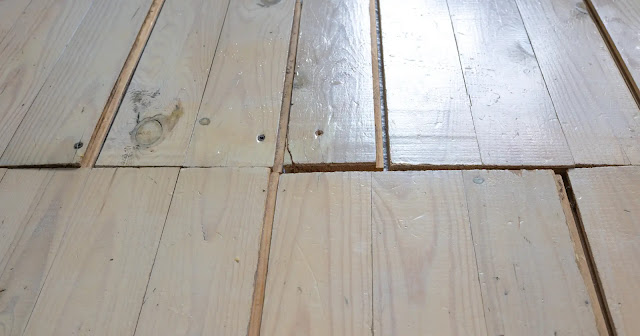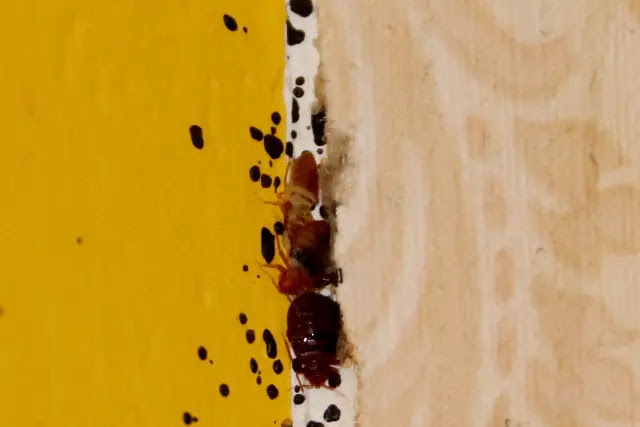It's a common misconception that bed bugs solely inhabit the confines of mattresses and bedding. However, these elusive pests have been known to venture beyond their typical habitat, finding solace in various parts of our homes. This naturally begs the question: can our wooden floors be a sanctuary for these blood-sucking critters?
Quick answer: Yes, bed bugs can live on top of wood floors, especially if there are cracks, gaps, or crevices. While they prefer fabric surfaces closer to their human hosts, a significant infestation might drive them to occupy wooden floors as secondary hiding spots.
As I sat in my living room, a thought crossed my mind about the resilience of these pests. I had recently tackled an infestation in my bedroom, and the experience had made me more observant of my surroundings. The glow of the evening sun highlighted the grains and patterns on my hardwood floor, and a chilling question arose: Could the bed bugs have found a haven here too?
My initial inclination was to dismiss the thought. After all, wooden floors are hard, smooth surfaces, surely not a place where a bed bug would choose to reside. But the more I pondered, the more I realized the importance of understanding the behavior of these pests. Knowing where they can and cannot live can make a world of difference in effectively eradicating them.
{tocify} $title={Table of Contents}
The Allure of Wood for Bed Bugs
While bed bugs are primarily known to infest beds, as their name suggests, their survival instincts drive them to adapt. It's essential to remember that their primary objective is to stay close to a food source, which, unfortunately, is us.
Wood, by its very nature, has various grooves, patterns, and sometimes, imperfections. Old wooden floors, in particular, can have tiny cracks or gaps that might go unnoticed by the casual observer. To a bed bug, however, these imperfections are not flaws but potential homes. A floorboard with slight separations or a wooden surface with even the tiniest of gaps can offer a bed bug the shelter it seeks.
As I reminisced about my previous confrontations with these pests, an instance struck me. During a particularly stubborn infestation, I had taken apart almost every piece of furniture in my home. Yet, to my dismay, I kept waking up with those telltale bites. The answer to this enigma had been right under my feet, quite literally. The antique wooden flooring passed down through generations in my family home, became the unexpected hideout for these pests.
Why Wood Floors Can Be Problematic
Hardwood floors, especially older ones, have a unique charm. They echo stories of the past and offer a warmth and rustic appeal that modern materials can't quite replicate. But, with age and wear, these floors develop gaps, fissures, and even knotholes – all prime real estate for bed bugs looking for refuge.
Moreover, the wood's porous nature might provide slightly more humidity than, say, a tiled or marble floor, offering an environment that isn't too unfavorable for the bed bug. The bugs don’t necessarily thrive on the wood, but they can certainly exploit it during times of overpopulation or when their primary habitats become inhospitable due to treatments or other disturbances.
Signs of Bed Bugs on Your Wood Floors
Identifying a bed bug infestation on a mattress is relatively straightforward. The signs are usually evident: dark fecal spots, shed skins, and of course, the bugs themselves. But when it comes to wood floors, these signs can be more subtle and, hence, more sinister.
If you suspect that your wooden floors might be playing host to these unwanted guests, look for the following indicators:
- Tiny black spots: These could be fecal droppings from the bed bugs. On a wooden floor, they might look like specks of dirt or minute shadows cast by the grain of the wood.
- Egg cases or molted skins: Bed bugs undergo five nymph stages, shedding their skin at each stage. These shed skins or the tiny white egg cases might accumulate in the cracks or gaps of the floor.
- Live bugs in the crevices: Using a flashlight, inspect your floor's nooks and crannies, especially during the night when the bugs are most active. Spotting even a single bug can be an indicator of a more significant lurking problem.
Remember, wooden floors can extend the reach of bed bugs, allowing them to spread to other areas of your home. They might not be the primary residence of these pests, but they can certainly be a transit route or a secondary shelter.
Navigating the Nuances: Protecting Wooden Floors
Navigating the complexities of bed bugs and their crafty ways, I have often found that prevention is the strongest weapon. There's a dance to be performed between preserving the integrity of wooden floors and ensuring they are safeguarded against these pests.
Inspect, Reflect, and Act
Settling into a rhythm of routine inspections of your wooden floors can be your first line of defense. Those tiny crevices and cracks, which might seem insignificant, can harbor these pests. A flashlight can become your best friend, illuminating the hidden corners and spaces where bed bugs might lurk.
Seal Their Fate
Consider this a double win - sealing the cracks and gaps in wooden floors not only prevents bed bugs from finding a refuge but also extends the life and beauty of the floor. Contemporary wood sealants are both effective and gentle on the floor, ensuring that neither the bugs nor the treatments damage your precious wooden surfaces.
Nature as an Ally in Your Quest
Drawing from tradition and nature's wisdom, certain elements can be deterrents for bed bugs. While diatomaceous earth remains a powerful tool, even simple acts like mopping with hot water infused with a few drops of eucalyptus oil can act as a deterrent. These not only ensure a bug-free environment but also fill your home with a pleasant aroma.
A Deeper Dive: Natural Interventions
Steering clear of chemicals, I often find myself gravitating towards natural remedies. Wooden floors, with their organic essence, seem to resonate better with nature-inspired solutions.
The Essence of Trees
Essential oils, particularly those like tea tree and peppermint, have properties that bed bugs detest. A light spray, maybe once a week, can be a deterrent and also add a refreshing scent to your home.
Age-old Traditions - Wood Polishing
Wood polishing, a practice that dates back centuries, can be an unexpected ally. The oils, especially those with citrus bases, not only nourish the wood but also repel pests.
Modern Integrations
In today's age, it's all about blending the old with the new. Ultrasonic repellents, although modern, can work in tandem with traditional methods to offer an added layer of protection.
Conclusion
The delicate balance of coexisting with nature often throws challenges our way. As I reflect upon my journey with bed bugs, wooden floors stand out as a surprising chapter. These surfaces, while exuding warmth and character, can become unsuspecting hosts to pests that test our patience.
However, it's not just about recognizing the problem but about adapting and finding solutions. Wooden floors, with their timeless charm, need not be sacrificed at the altar of bed bug infestations. With a blend of tradition, nature, and modern innovations, we can ensure that our homes remain sanctuaries, free from the clutches of these blood-sucking invaders.
In the end, the dance with wooden floors and bed bugs is about understanding, adaptation, and, above all, resilience. By arming ourselves with knowledge and tools, we can protect our cherished spaces and ensure that they remain a testament to beauty, history, and comfort.


